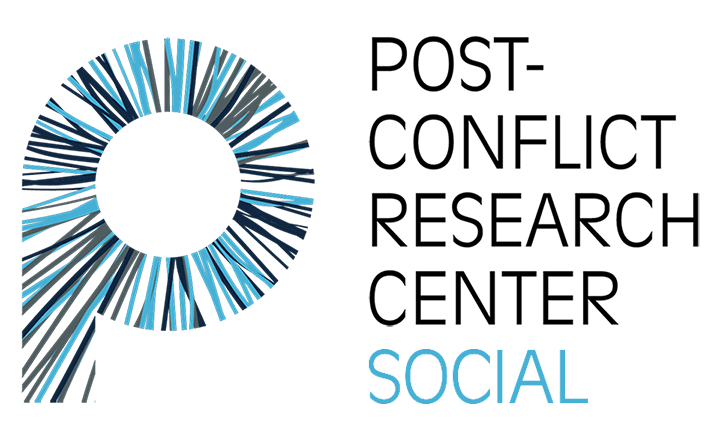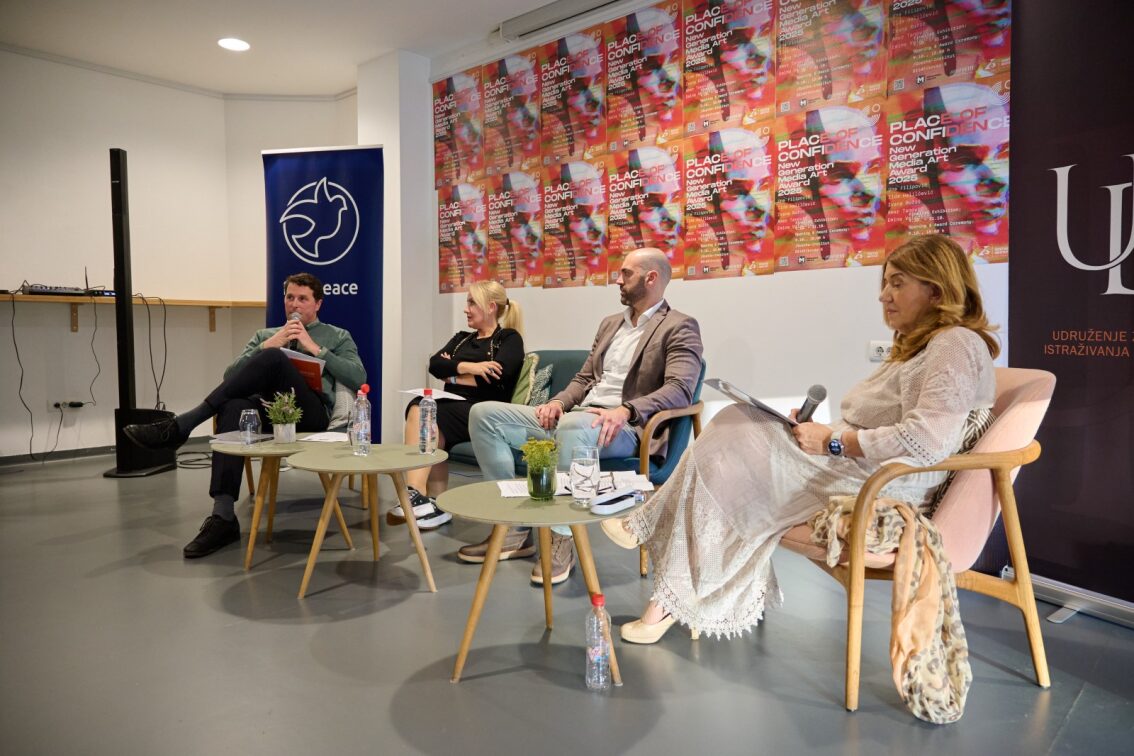
At the round table “Dealing with the Past as a Prerequisite for a Safer Future,” held in Sarajevo to mark the 32nd anniversary of the crimes near the Kazani pit, panelists reflected on the importance of documenting war crimes, promoting inclusive memorialization, and identifying steps toward a brighter future grounded in respect for the experiences of all.
The round table was organized by the Association for Social Research and Communications (UDIK), the Friedrich Ebert Stiftung Foundation, and Pro Peace Bosnia and Herzegovina.
In its keynote speech, historian and journalist Bert Hoppe explained Germany’s process of confronting its past. He recalled that only ten years after World War II did people begin to openly discuss atrocities committed by members of their own communities.
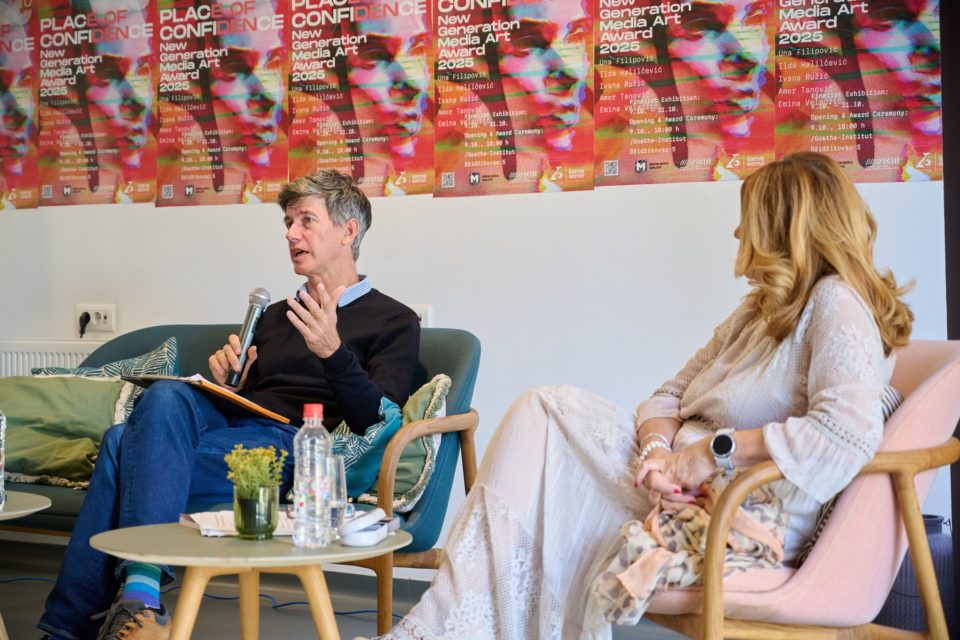
“They weren’t addressing other victims, the victims of their wartime atrocities— only the German victimhood. This was also reflected in scholarship and historical documentation about the Germans,” said Hoppe, adding that this is the first step toward facing the truth about what they themselves had done.
Different Perspectives on the War
The central lesson that Germans took away from the war, Hoppe said, is “No more war.”
“And if you look at the lesson that the Ukrainians or Poles, or Eastern Europeans in general, went away with, it’s ‘We have to be able to defend ourselves from aggressors.’ So, not ‘No more war,’ but ‘We have to be ready for it.’ Germans must be aware of this, that we don’t all look at war the same way,” concluded Hoppe.
Vildana Selimbegović, the editor-in-chief of Oslobođenje newspaper, who moderated the round table, said in her opening remarks that while the Kazani pit is just a notch on Mount Trebević, it represents the darkest stain on Sarajevo’s conscience.
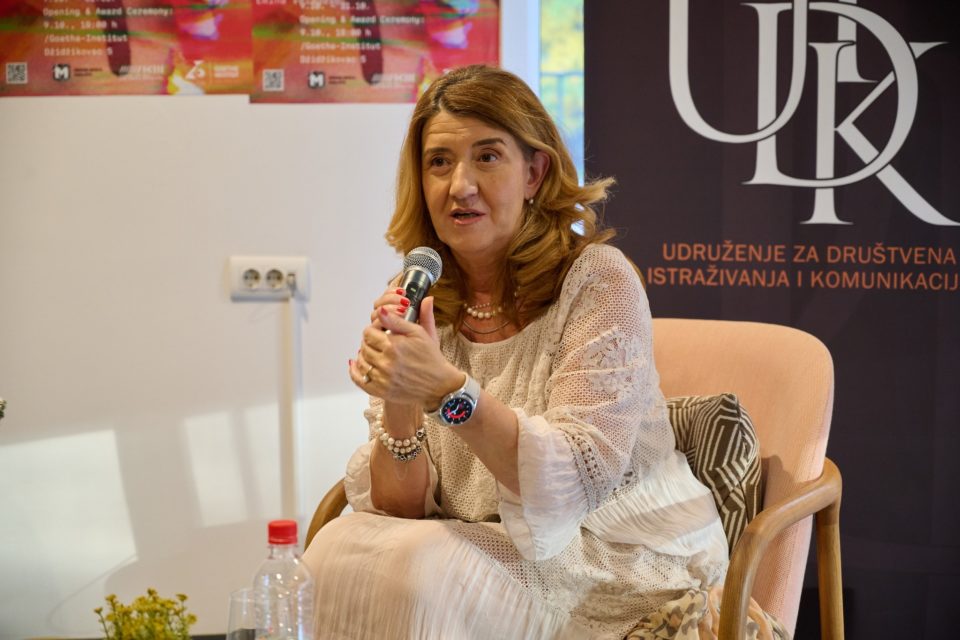
During the war, soldiers from the 10th Mountain Brigade of the Army of the Republic of Bosnia and Herzegovina (ARBiH), led by Brigade Commander Mušan “Caco” Topalović brutally killed a number of Sarajevans, mostly non-Bosniaks, and disposed of their bodies in the Kazani pit. On October 26th, 1993, on the orders of the BiH Presidency, special Interior Ministry and military police units halted the operations of Mušan “Caco” Topalović. Nine special forces members and four soldiers were killed during the arrest, along with Topalović, who was killed while attempting to escape.
“Today, 32 years later, all of the victims still haven’t been identified and buried with dignity,” said Selimbegović. She noted that a memorial was erected at Kazani, including a plaque inscribed with names of some victims.
As Selimbegović added, attempts to minimize this crime stem from efforts to put an end to the counting of victims and to designate November 9th — instead of October 26th, the day the killings ceased — as the day of remembrance for those killed at the Kazani site.
“October 26th, when the state of Bosnia and Herzegovina showed its determination to deal with the criminals within its own ranks, was marked for years as a day of remembrance, in an appeal to identify the victims’ remains and bury them with dignity. This commemoration was organized by non-governmental organizations and the media and served as a reminder that dealing with the past mustn’t be substituted by grand gestures. The victims deserve to be recognized. They deserve a memorial plaque in the city where they lived with their neighbors, sharing the daily hardships of life under siege,” Selimbegović asserted.
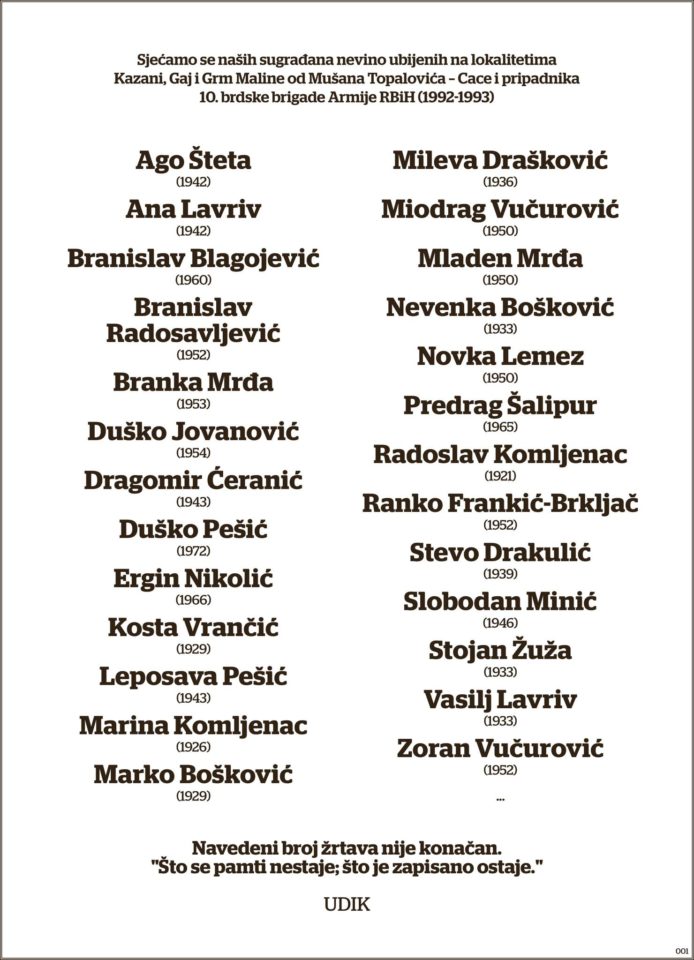
The siege of Sarajevo, which lasted 1,425 days, was the longest siege of a capital city in modern history. Judicial rulings confirm that Sarajevo residents were exposed to daily sniping, shelling, and terror by the Sarajevo-Romanija Corps of the Republika Srpska Army.
The general public in Sarajevo has been aware of the Kazani pit killings since the siege. With no official data on how many people were killed, the crime has been a subject of controversy. To date, 17 of the victims have been identified: 12 Serbs, two Croats, two Ukrainians, and one Bosniak.
When a Neighbor Becomes a Perpetrator
At the round table discussion, UDIK presented its publication Kazani: Trials, (Re)Exhumation, Memorialization.
UDIK founder Edvin Kanka Ćudić recalled that they have been documenting war crimes cases in BiH since 2015, from Brčko to Kazani.
“The information in our publication about Kazani was later disputed. The City of Sarajevo didn’t deny the information about the victims, but they omitted it when the monument was erected. And we’ve been talking about this for years, because the information on the monument isn’t the information we provided,” explained Ćudić.
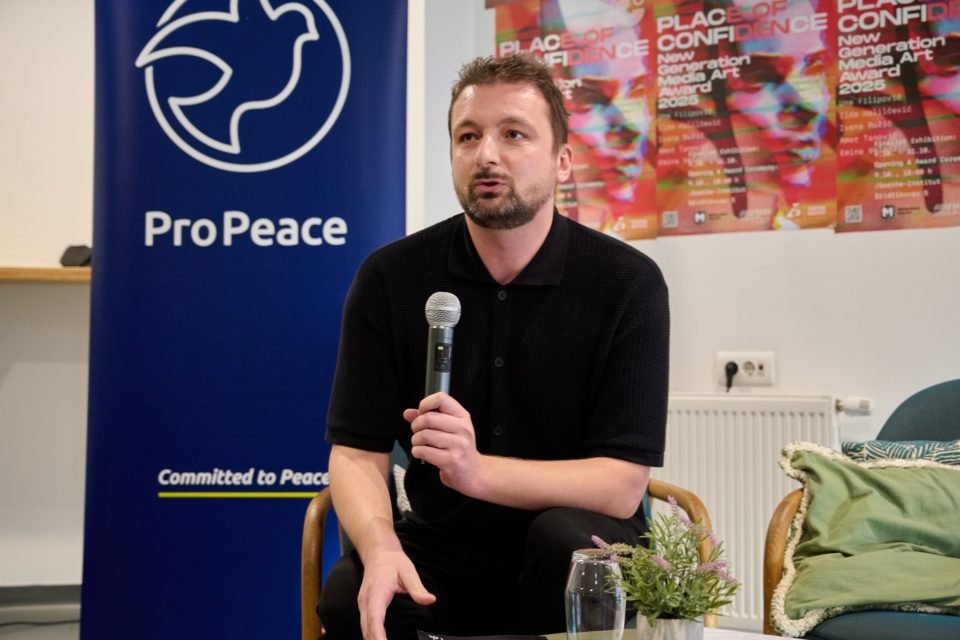
The memorial plaque to the victims was erected in 2021 located on difficult-to-access terrain. The authorities at the time did not inscribe on the monument who perpetrated the murders.
Historian Edin Omerčić believes that the Bosnian historians came closest to the truth about Kazani through the problematization of the coded operations Trebević and Miljacka in 1993, which were directed against Caco’s brigade.
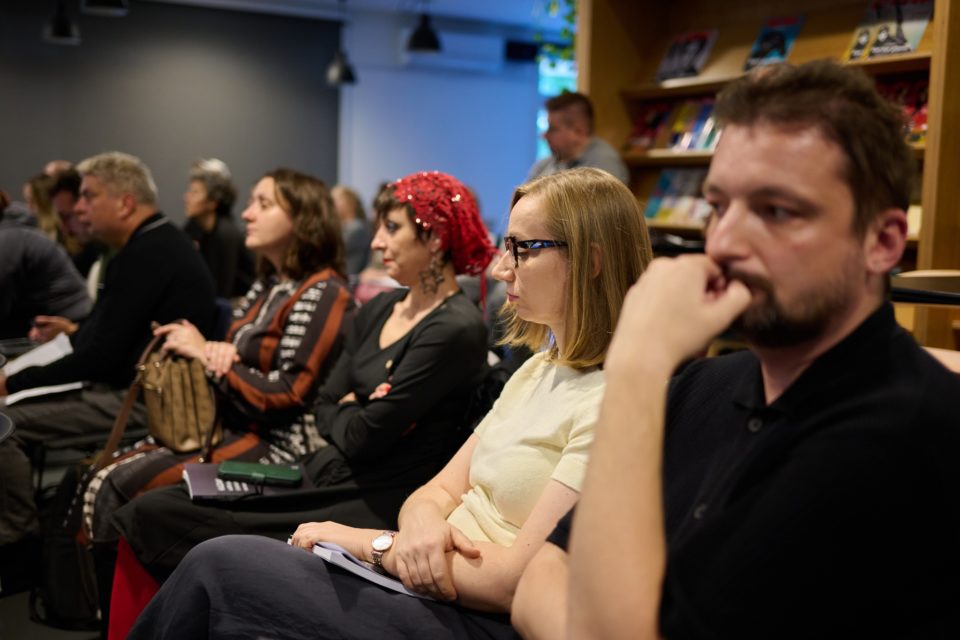
“When these crimes are discussed, the legal and political structure that led to them are rarely considered—and this is the necessary ‘switch.’ Bosnian historians need to begin investigating this criminal structure, and how, in just a few months, an ordinary man, a neighbor, can become a perpetrator,” Omerčić said, emphasizing the necessity for Sarajevo to confront Caco’s crimes.
Erna Mačkić spoke on behalf of the Post-Conflict Research Center (PCRC) about the importance of discussing these topics. She said that PCRC engages extensively with young people, citing the regional State of Peace Youth Academy, which leads an inclusive memorialization program. This involves taking young people to places where war crimes were committed to pay tribute to victims.
“Once, we also went to Kazani, as far as we could go by bus. The terrain is very dangerous, and because of the risk that Academy participants might be inured, we turned back. We weren’t able to lay flowers,” Mačkić recalled, adding that city officials failed to warn them ahead of time about the inaccessibility of the memorial.
The Need for Joint Action
According to Mačkić, young people are insufficiently informed of the judicially established facts about the war in Bosnia and Herzegovina. Most of what they learn comes from their parents and social media, where inaccurate information often gives them a distorted or even wrong picture.
“It’s very important that actors from civil society, the media, and politics join forces to confront the past. Every victim is a victim, and we all need to contribute to ensuring that victims have at least a minimum of justice, commemoration, and memorialization, among other ways of dealing with the past,” Mačkić said.
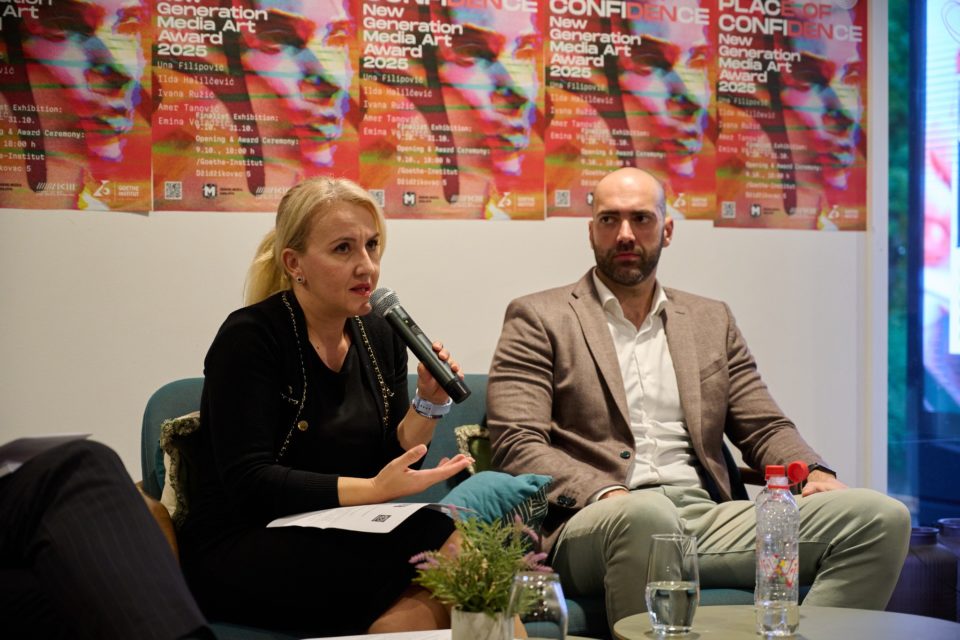
She expressed regret that we only remember atrocities when there are anniversaries. “If we don’t face the facts, we’re placing too great a burden on young people, even though they’re not guilty of anything because they weren’t even alive during the war. This can have far-reaching consequences,” warned Mačkić.
Adi Škaljić, a councilor from the party Naša Stranka, recalled that they submitted a proposal several years ago to build a monument at Kazani, but only six councilors voted in favor, while 26 abstained. He doesn’t believe that the current City Council convocation would have better results.
“We have to get people out of their comfort zones. We need to talk about this openly. We need unity among the families of the Kazani victims and the families of the special forces who were killed. It would be great if people united to condemn this crime,” urged Škaljić.
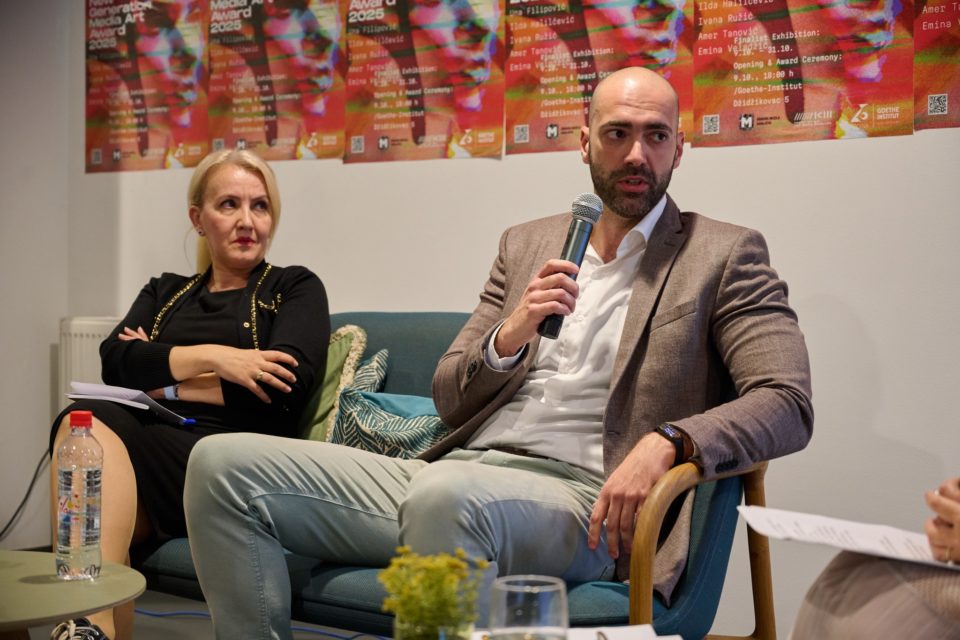
The panelists agreed that Sarajevo should set an example in memorializing the Kazani crimes to encourage other places in BiH to properly mark sites of civilian suffering. One promising solution would be to pass legislation to ensure that memorialization across the country cannot be impeded by the will of individuals.






